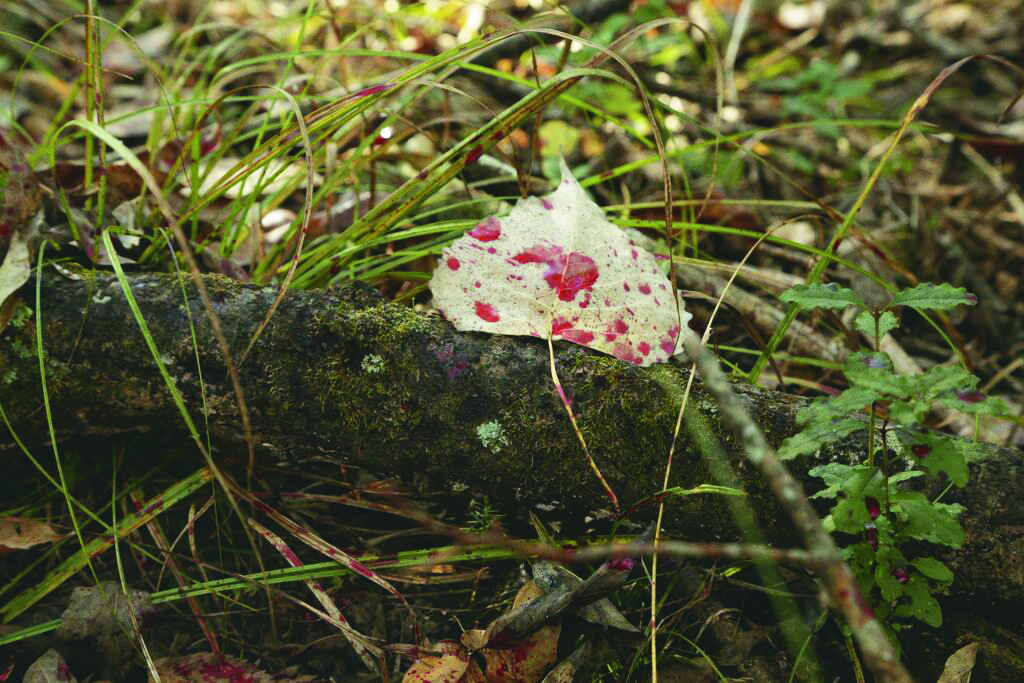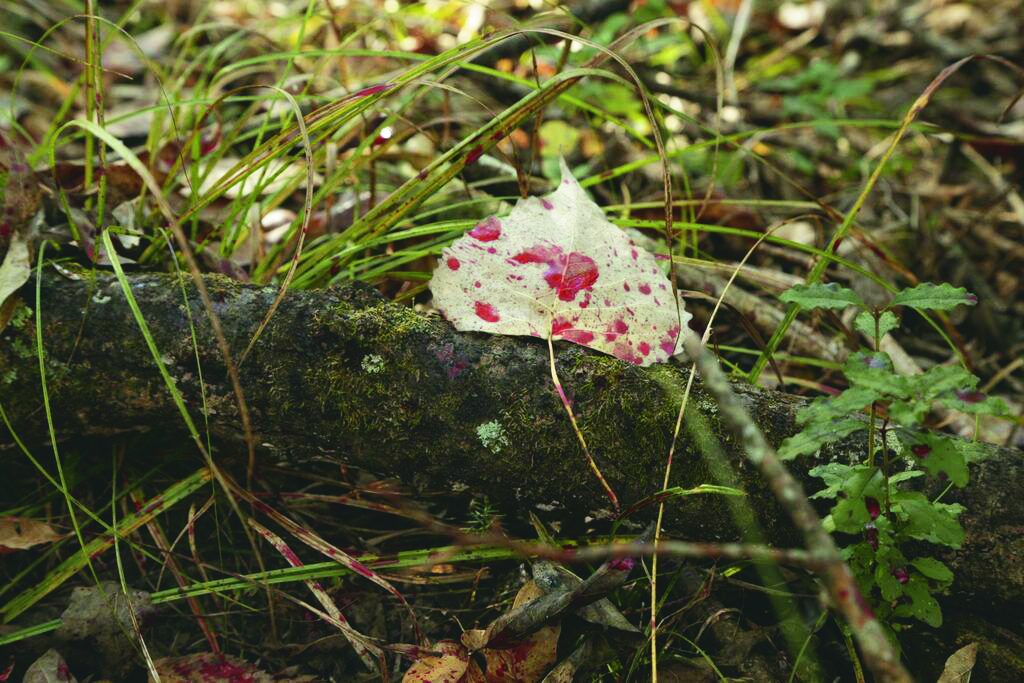Certain Steps to Remember that will help you find an arrowed deer.
Here comes your dream buck, sporting a set of antlers so big it looks like a rocking chair atop his head. Your legs shake and your heart is pounding so hard you wonder if he can hear it. You can’t look at the antlers because that just makes the nervous excitement even worse.
Your dream buck is closing the distance fast. He’s about to cross one of your shooting windows —antlers, head, neck, shoulder—pick a spot. Release! Where did you hit? Did your arrow pass through? Now what?
A good pass-through hit in the vitals is what every bowhunter wants. If you achieve it, you can witness your quarry topple over after a short distance. But what happens when your hit is not immediately fatal? How you act and what you do next will have a huge influence on whether or not you recover the animal.
After a good double-lung hit, tracking a deer is usually very easy. After a less-conclusive shot, you’ll need to master the skill of “blood-trailing,” plus your skills of observation and deduction if you hope to recover your reward. Here are some key tips to recovering your deer.
Immediately After
After you “drop the string,” watch and listen intently, to see your arrow in flight and where you hit is valuable. With the fast arrow speeds these days, this can be difficult.
Lighted arrow nocks and bright-colored fletching tend to help. I like to fletch my own arrows and will almost always use two white feathers and one brightly colored cock feather. A white or bright-yellow arrow dip can also help.
Make several reference points to where the animal was standing when you shot and where you last saw the animal. Watch the reaction and listen carefully as your quarry bolts. Pay close attention to sounds that might reveal the direction the deer is headed. Listen for general sounds, but also for specific noises like water splashing, dry leaves crunching, branches snapping, or rocks scraping that might lead you to a unique spot.
Keep listening for several minutes after the shot. You might hear the animal change direction or crash or kick as it expires. Make reference points to where you heard the last sounds.
Mark the exact spot the animal was standing when you took the shot. If you can’t find first blood, use it as a reference point and line it up with the last spot that you saw the animal. This can save loads of time when you’re trying to pick up the trail.

Getting on the Trail
Next, try to recover your arrow. If you can locate the arrow, examine it carefully. The color of the blood, hair samples, or the smell on the arrow can tell you exactly where you hit.
“Unless you saw the animal expire, I suggest leaving it for at least an hour.”
Dark-red blood typically means a liver hit. Pink frothy blood almost always means a lung hit. Bright-red blood may be heart, arteries, or muscle. In this case, the volume of blood you see is a good indication of which it is.
If you suspect a gut shot, you’ll easily detect a foul smell on the arrow. If the arrow is still in the animal, this could lead to other important clues down the trail.
Unless you saw the animal expire, I suggest leaving it for at least an hour. In fact, unless I’m far from my vehicle or someone else has dropped me off, I purposefully don’t bring my camera or field-dressing equipment with me so I have to return to my vehicle to get it. This helps me avoid the temptation to get on the trail immediately, which usually isn’t wise.
Many other places on a whitetail’s anatomy offer lethal hits. It’s not humane to try for those shots, but sometimes it happens.
With a gut shot, back out and give the animal at least six hours. It’s a lethal hit, but if you push the animal, your odds of recovery decline precipitously. A liver hit, characterized by its dark-red blood, is also lethal.
But again, you need to give the animal time, I suggest at least two hours.
If you give the animal that time, more than likely you’ll find it dead in its first bed, which should be less than 200 yards from the hit. The blood on a muscle hit often resembles heart or artery blood but there will be much less of it. You’ll know if you hit a major artery or vessel. The occasional drop of blood can also resemble a gut shot where fat or intestines can plug the exit hole.
Exceptions
My theory on a muscle hit differs from some. Normally, you would want to let the animal bed down and bleed to death. With a muscle hit, if the animal beds down, chances are the wound will start to clot and quit bleeding.
With this kind of hit, I suggest hitting the trail to pursue the animal right away. Don’t let up, be steady and ruthless. Keep pushing until you can either finish off the animal or you know it will survive.
Another exception to the “give the animal time” rule is in cases of inclement weather. If rain or snow is moving in, I’ll scratch my usual wait time and take to the trail immediately. Only if I bump the animal out of a bed, I will retreat and wait longer. A fresh sign is so much easier to track than that which has been diluted and wet or covered by snow.
On tough trails, examine every tiny clue carefully. If a track is not evident, inspect blood splatters for the direction of travel.
Remember that blood sign may not only be on the ground, whitetails brush up against many objects such as trees, brush, and tall grass while they travel. The best way to find your trophy buck is to think like a crime scene investigator.

Enlisting Help
One thing I have learned after being on hundreds of wounded-deer trails in my day—they almost always head “home” after being wounded. If an animal suffers a wound that’s not immediately fatal, he’ll almost always head toward his primary bedding area. Scouting and knowing the buck you’re hunting obviously helps here.
“If you’re on a difficult-to-follow trail, carry small pieces of ribbon, toilet paper, or something else you can use to mark new sign and keep you on the line.”
While on the trail, make sure to scan the area in front of you with binoculars. Enlisting a tracking buddy is a great help. The first person on the trail should be scanning the ground in front of them often.
If you’re on a difficult-to-follow trail, carry small pieces of ribbon, toilet paper, or something else you can use to mark new sign and keep you on the line. If you lose the blood trail, lining up those markers and following the same heading will usually put you back on track.
It all depends on how easy the trail is to follow. If you can go at a constant walking speed, you can simply have your tracking buddy stand by the last sign. When the sign is harder to come by, marking the trail with ribbon or paper can be helpful.
Conclusion
If you’re on an afternoon hunt and dark is approaching, you’ll have to be the judge of how good a hit you made. Unless you’re confident in a lethal hit, it’s almost always a good idea to back out and come back at sunup, especially if you’re on a tough trail.
I’m confident that a whitetail, especially a mature buck, knows when it’s being pursued and trailed. I’ve seen them accomplish some amazing feats, I swear these were done specifically to throw me off of the trail—like walking down a creek or through extended areas of water, backtracking down the same trail and then heading off 90 degrees, circling multiple times in a small area, or laying tight to the ground and waiting for me to pass by.
When you’re on the blood trail of a wounded animal, remain unrelenting and open-minded. If the trail doesn’t lead you to the animal, you can always search a grid pattern in a last-ditch attempt to find it.
Persistence and effort will lead you to just as many downed animals as a blood trail will.




